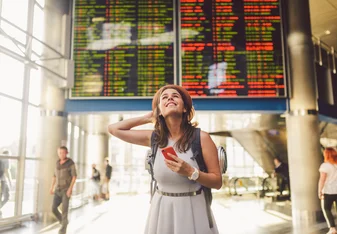Study Abroad in the Bahamas
The country is an archipelago, consisting of more than 700 islands, cays, and islets in the Atlantic Ocean. The British colonized in 1718, in an effort to discourage the rampant piracy in the region (Blackbeard and Captain Morgan were regulars). The Bahamas became an independent Commonwealth in 1973, but they kept Queen Elizabeth of England as the country's monarch.
Of course there is more to the nation than postcard-perfect sun n’sand. The region is a lively mix of cultures, rich with beliefs, traditions, folklore and legends that are sure to captivate visitors. Students who are interested in ecology and marine biology will be fascinated by range of flora and fauna in the coral reefs and forests. Students who study abroad in the Bahamas will tell you that this incredible place is worth more than just a day stop on a cruise ship!
A good education is at the top of everyone's list when searching for a university. When considering studying abroad, students are often curious about academic life, language and housing.
- Academic Life: Many study abroad programs in the Bahamas focus heavily on Marine Biology, often taking advantage of the diverse ecology of the region with many hands-on research opportunities. When was the last time your science class went snorkeling?
- Housing: No matter where you are living, you won't be far from the beach. Students are usually housed in dormitories or cabins provided by their program. If you don't feel comfortable living in a shared environment, be sure to express your concerns to your study abroad program from the gitco. Most will be accommodating of students' needs. However, be warned: studying abroad IS about challenging your comfort zone, so it may be worth trying out something you'd otherwise be afraid of or hesitant to do.
- Language: English is the national language of the Bahamas, and classes will be conducted in English. However, many students find the regional accents and slang a bit tough to follow when they first arrive! Don't rest on those English-speaking laurels -- make friends with local Bahamian students so they can teach you alllllll the best dirty (er, slang) words.
The capital is Nassau on the island of New Providence. Because of its prime location along many trade routes, the town got its start as a pirates' den. The self-proclaimed "Privateers Republic" was led by Edward Teach-- better known as the infamous Blackbeard.
Today, with a population of 260,000, Nassau contains nearly 80% of the population of the Bahamas. However, it's still quite low-rise and laid back, with the pretty pastel pink government buildings and the looming giant cruise ships that dock daily. Old Town is an interesting mixture of abandoned buildings and bright Caribbean architecture. The National Art Gallery of the Bahamas is also worth a visit, if not for the art than for the beautiful building— once the residence of the Chief Justice. The Pirate Museum has cheesy and delightful displays of pirate life, with a few real artifacts mixed in. When you get hungry, head to the Potters' Cay, where there are many of stalls that sell Bahamian delicacies.
Andros is the largest island in the Bahamas (with a total area greater than the rest of the 700 islands When the Bahamas were known as the Pirate's Republic in the 18th century. Henry Morgan, namesake of Captain Morgan's Rum, was said to frequent Andros. Today, tourists and students alike are drawn to the islands blue holes, water-filled intricate cave systems that run underneath the island and sea floor, and Andros’ incredible biological diversity.
According to local legend, to fantastic creatures can be found on the island. The Lusca, half-octopus, half-shark and gigantic, supposedly swallows whole boats. The Chickcharney, resembles a large owl. Furry and feathered and three-foot tall, it has one red eye and three-toed claws. Look out!
Widely believed to be Christopher Columbus' first stop in the New World, San Salvador Island is home to the Gerace Research Centre (formerly the Bahamian Field Station). More than 1,000 students and researchers work from the station every year as a base of operations for studying tropical marine geology, biology, and archaeology.
There are tons of scholarships out there. And remember to check with your university for any other scholarship opportunities!





















